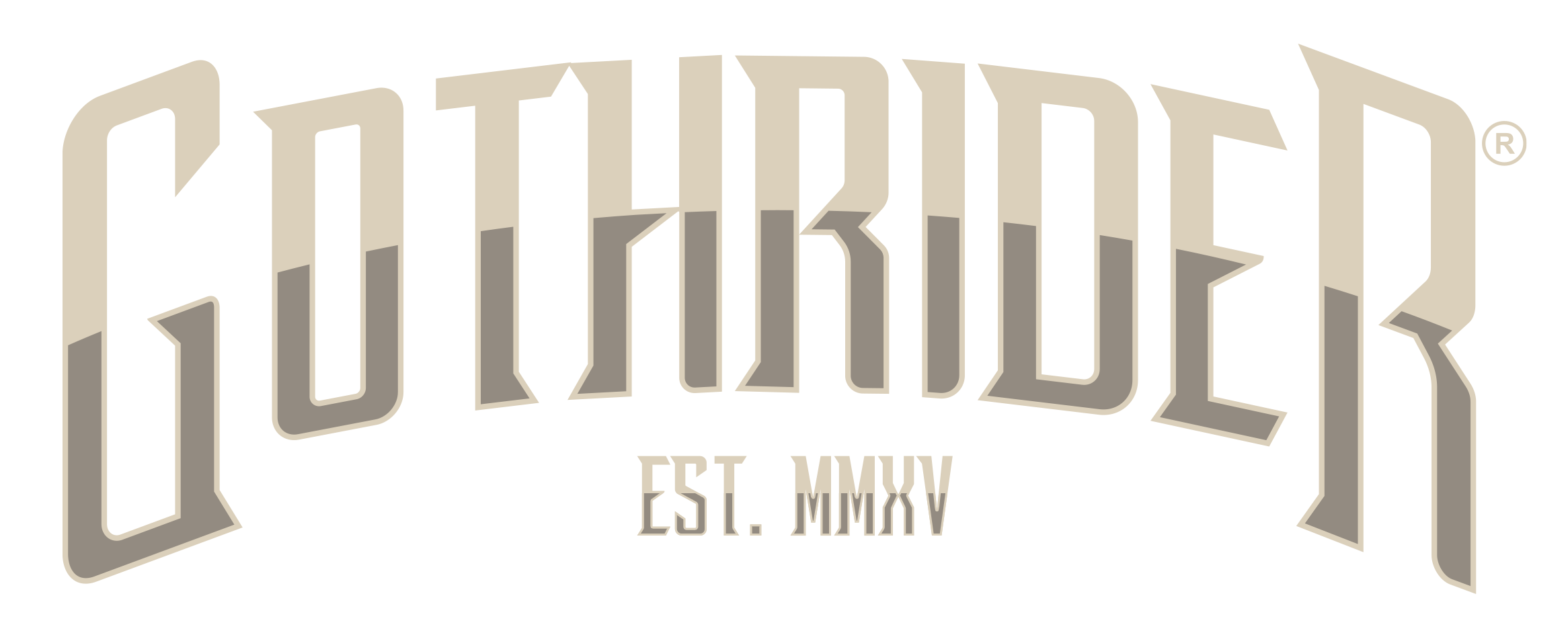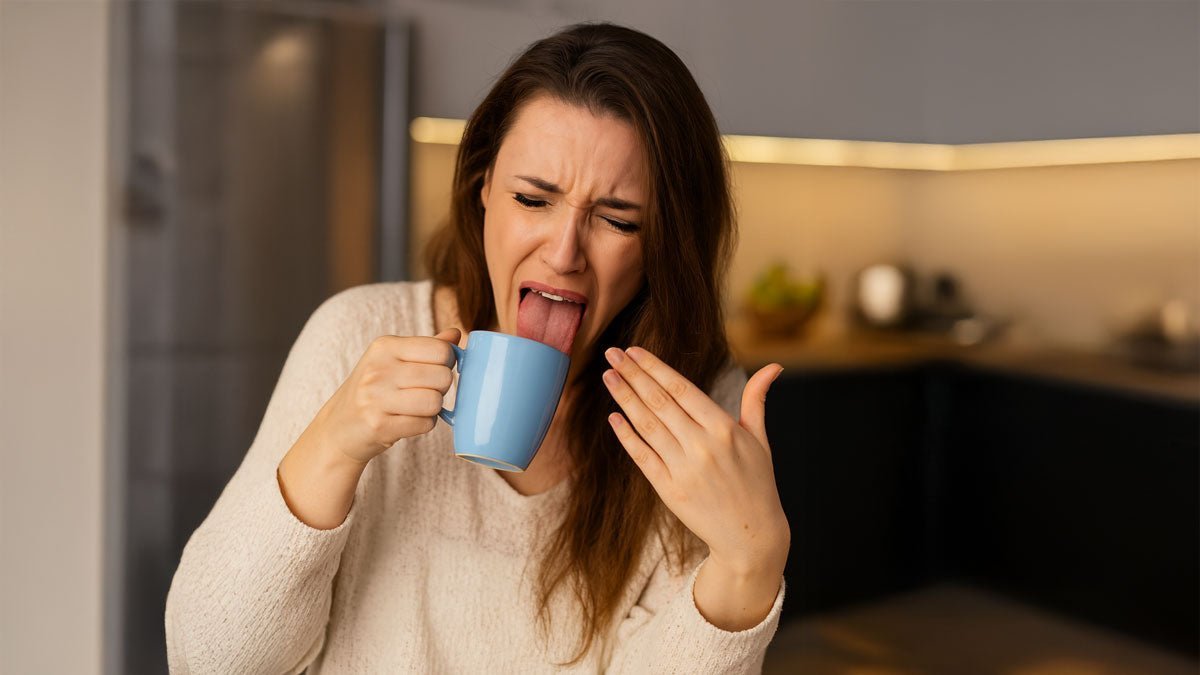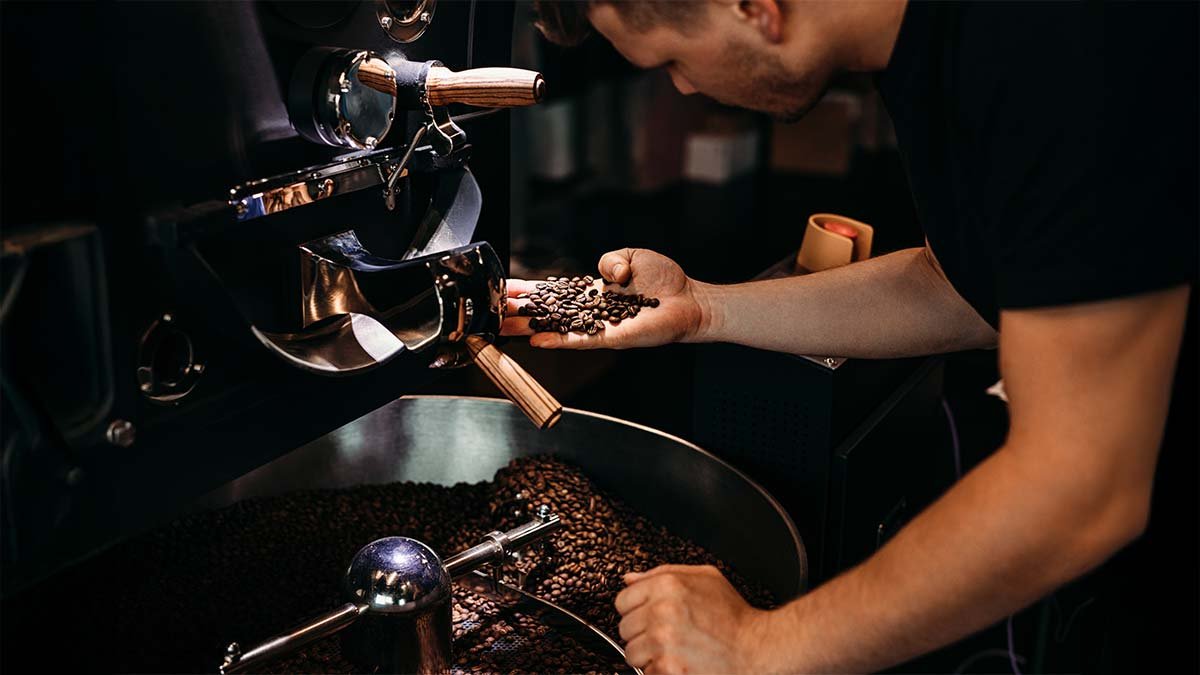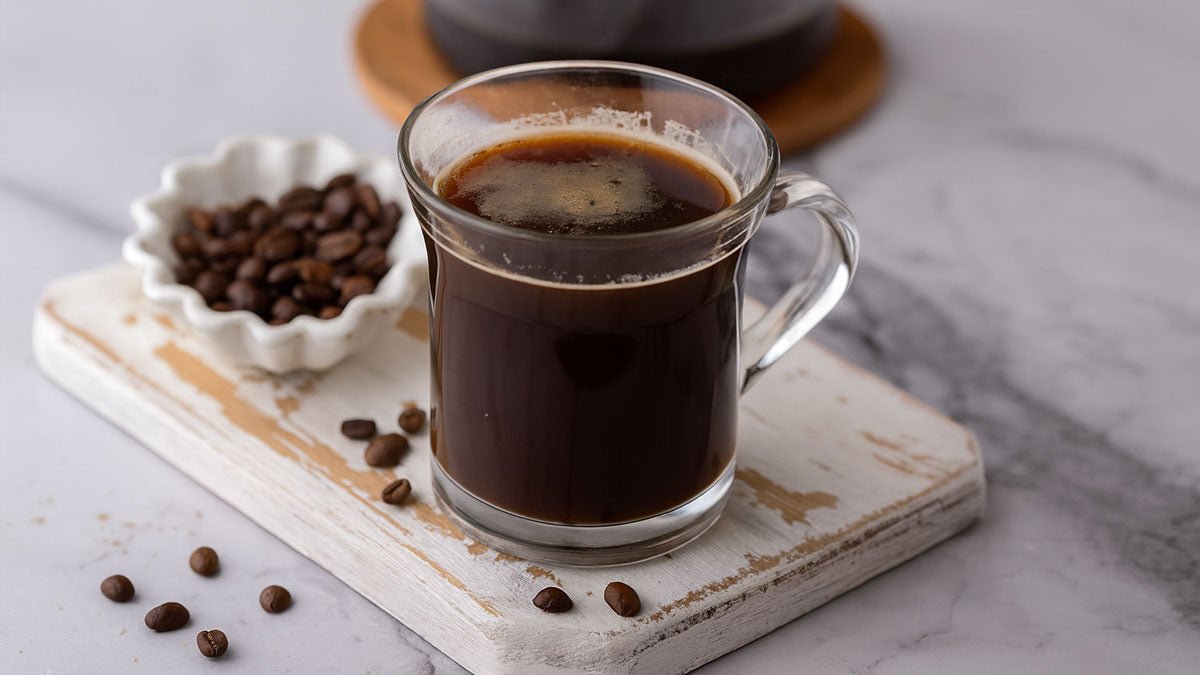There are few things more frustrating than looking forward to a rich, flavorful cup of coffee—only to take a sip and find that it tastes thin, weak, or watery. If you’ve ever asked yourself, “why does my coffee taste watery?” you’re not alone. This is one of the most common problems home brewers face, and the good news is that it’s almost always fixable.
The culprit often comes down to two critical factors: the coffee‑to‑water ratio and grind size. These two elements directly control extraction—the process that pulls the soluble flavors, oils, and aromas out of coffee grounds. But other variables like water temperature, brew time, brew method, and even water quality also play a role.
In this guide, you’ll learn exactly why your coffee tastes watery, the science behind extraction, and step‑by‑step adjustments you can make to transform your weak cup into a bold, flavorful brew.
Table of Contents
- What Does “Watery Coffee” Really Mean?
- Why Does My Coffee Taste Watery? (The Short Answer)
- How Does Coffee‑to‑Water Ratio Affect Flavor?
- How Does Grind Size Impact Watery Coffee?
- Could Water Temperature Be the Problem?
- How Does Brew Time Influence Strength?
- Can Water Quality Make Coffee Taste Watery?
- How Brewing Method Affects Watery Coffee
- Are You Confusing Strength with Extraction?
- A Practical Step‑by‑Step Fix for Watery Coffee
- Coffee Ratio Cheat‑Sheet (By Brewer)
- Troubleshooting: Symptoms → Causes → Fixes
- Common Myths About “Strong” vs “Watery” Coffee
- Advanced Tuning: Flow, Agitation, Filters & Heat Loss
- Could Bean Freshness Be the Hidden Culprit?
- FAQ: “Why Does My Coffee Taste Watery?”
- Final Thoughts: How to Never Drink Watery Coffee Again
What Does “Watery Coffee” Really Mean?
When coffee tastes watery, it usually means it’s under‑extracted. Under‑extraction occurs when hot water doesn’t dissolve enough of the coffee’s soluble compounds—sweetness, acids, aromatics, and oils—to deliver satisfying body and flavor. Instead of a balanced cup, you get something that tastes flat, sour, hollow, or simply like brown‑tinted water.
Common signs of watery coffee include:
- Thin, tea‑like body with little texture
- Sour, sharp taste without sweetness to balance it
- Weak aroma and a “pale” looking brew
- Fast brew times (water races through the bed)
Under‑extraction is most commonly caused by one of two things: too little coffee for the water used (ratio problem) or a grind that’s too coarse (flow/contact‑time problem). Fix those first, and most watery cups disappear.
Why Does My Coffee Taste Watery? (The Short Answer)
If you want the fastest fix, focus here:
- Incorrect coffee‑to‑water ratio: Too little coffee produces a weak brew. Start between 1:15 and 1:17 (coffee:water by weight).
- Improper grind size: Too coarse and water passes through too quickly, leaving flavor behind. Adjust finer if your brew finishes too fast or tastes thin.
- Brewing variables: Water temperature 195–205°F (90–96°C), proper brew time, and decent water quality matter more than most people think.
How Does Coffee‑to‑Water Ratio Affect Flavor?
Your coffee‑to‑water ratio is the “recipe” for strength and balance. Using too little coffee yields watery, underwhelming results; using too much can taste overpowering or bitter even when extraction is fine.
Gold‑standard starting point: aim for 1:16. That means for every 1 gram of coffee, use 16 milliliters of water. Then nudge toward 1:15 for a richer cup or toward 1:17 for a lighter cup—without drifting into “watery.”
Why weighing is non‑negotiable: Scoops are unreliable because roast level and bean density vary. A tablespoon of dark roast weighs less than a tablespoon of light roast. A simple digital scale removes guesswork and makes great coffee repeatable.
| Brewing Method | Suggested Ratio | Example Dose |
|---|---|---|
| Drip Coffee Maker | 1:16 | 18 g coffee → 290 ml water |
| Pour‑Over (V60/Kalita) | 1:15 – 1:17 | 17-19 g coffee → 260 – 300 ml water |
| Chemex | 1:15 – 1:16 | 25 g coffee → 375 – 400 ml water |
| French Press | 1:15 | 20 g coffee → 300 ml water |
| AeroPress | 1:15 – 1:17 | 15 g coffee → 225 – 255 ml water (incl. bypass if used) |
| Espresso | 1:2 (brew ratio/liquid yield) | 18 g in → ~36 ml out in 25–30 s |
Quick wins if your ratio is the problem:
- Use a gram scale. Measure both coffee and water by weight.
- Start at 1:16 for most manual and drip brews; adjust taste ±1 “point”.
- For a clearly watery cup, keep everything the same but move from 1:16 to 1:15 before changing anything else.
How Does Grind Size Impact Watery Coffee?
Grind size controls surface area and flow rate. Together, those two factors govern how much flavor water can dissolve (extraction). If the grind is too coarse, water slips through quickly with minimal contact time—resulting in a thin, sour, under‑extracted cup.
| Brewing Method | Recommended Grind | Texture Cue |
|---|---|---|
| Espresso | Fine | Table salt |
| AeroPress | Fine–Medium | Between table salt and sand |
| Pour‑Over (V60/Kalita) | Medium | Regular sand |
| Chemex | Medium–Coarse | Coarse sand |
| Drip Coffee Maker | Medium | Beach sand |
| French Press | Coarse | Sea salt |
How to diagnose a too‑coarse grind:
- Your pour‑over drains in well under 2:30 for a typical 1–2 cup recipe.
- The bed looks uneven with large particles and channels around the filter wall.
- The taste is sharp, lemony‑sour, and lacks sweetness or body.
How to fix it: Keep your ratio constant and grind one “notch” finer at a time. You’re aiming for slower flow, slightly longer contact, and a taste that moves from sour/thin toward sweet, round, and balanced. If you hit bitter/astringent, you went too far—back off one notch.
Could Water Temperature Be the Problem?
Even with the perfect ratio and grind, water that’s too cool will under‑extract and create watery coffee. The sweet spot is 195–205°F (90–96°C).
- Too cool (< 190°F / < 88°C): sour, thin, and hollow.
- Too hot (> 205°F / > 96°C): bitter, harsh, and over‑extracted.
No thermometer? Bring water to a rolling boil, then wait ~30 seconds before pouring for most kettles and normal room temperatures. For long pour‑overs or very cold rooms, you might not want to wait—heat loss can be significant during a 3–4 minute brew.
How Does Brew Time Influence Strength?
Contact time is a big lever. If water doesn’t spend enough time mingling with grounds, you’ll pull fewer solubles—resulting in watery coffee. Overshoot the time and you collect excess bitter compounds.
- Pour‑Over: 2:30–4:00 total time for 1–2 cups (dose dependent)
- French Press: 4:00 steep before plunging
- AeroPress: 1:30–2:00 (including stirring; inverted methods can run longer)
- Espresso: ~25–30 seconds from pump on to yield
If your pour‑over regularly ends in ~2:00 with a medium grind, that’s a clue to grind finer, pour slower, or both. If your French press tastes watery, you may be plunging early—let it go the full four minutes.
Can Water Quality Make Coffee Taste Watery?
Absolutely. Coffee is 98–99% water, so what’s in your water matters. Extremely soft (distilled/RO) water often produces flat brews because minerals help extract and carry flavor. On the other hand, very hard water can impede extraction or mute aromatics.
Simple rule: If your tap water tastes unpleasant, your coffee will too. Use filtered water or a balanced spring water. If you’re curious, many coffee pros aim for total dissolved solids (TDS) around ~100–175 ppm with moderate alkalinity for a round, sweet cup, but you don’t need a lab to taste the difference with a basic filter.
How Brewing Method Affects Watery Coffee
Drip Coffee Makers: Why so many cups taste weak
Many drip machines run on the cool side and use baskets that encourage fast flow. If you pair that with coarse pre‑ground supermarket coffee, the result is often thin and dull.
- Use fresh beans and grind medium.
- Start at 1:16 and adjust to taste.
- If your machine brews cool, grind slightly finer or try a smaller batch size to maintain heat.
Pour‑Over (V60, Kalita): Control is power
Pour‑over magnifies your technique. Pouring too quickly shortens contact time and leaves you with a pale, watery cup.
- Target a total brew time of 2:30–4:00 for 1–2 cups.
- Use a controlled spiral pour and avoid over‑agitating the filter walls.
- Grind finer if the bed drains too fast; coarser if it stalls.
Chemex: Beautiful clarity, easily under‑extracted
Chemex filters are denser, which is great for clarity but can still yield watery cups if the grind is too coarse and the pour too fast.
- Grind medium–coarse, not French‑press coarse.
- Ratio of 1:15–1:16 helps compensate for the thicker filter.
- Use a slightly slower pour and keep water hot to avoid heat loss.
French Press: Body for days—unless you rush it
Press coffee should be the opposite of watery. If it is, the grind is often too coarse or the steep too short.
- Use a coarse grind and steep 4 minutes.
- Skim the surface oils/foam before plunging for a cleaner cup if desired.
- Too gritty? Your grinder may be producing excessive fines—consider a burr upgrade.
Espresso: When “blonding” means watery
Watery shots typically come from a grind that’s too coarse or an uneven puck. Water finds the path of least resistance—channeling through weak spots and exiting pale and thin.
- Grind finer until you hit ~25–30 s for a 1:2 ratio (e.g., 18 g in → 36 g out).
- WDT (Weiss Distribution Technique) or puck rakes can help fix clumps and improve even flow.
- Tamp consistently and ensure your basket is properly filled and leveled.
AeroPress: Tiny brewer, huge flexibility
AeroPress recipes abound, but watery results usually come from too little coffee or too short a steep.
- Use 14–18 g coffee with a fine–medium grind.
- Steep ~1:30–2:00 and press gently; add bypass water to taste if you like an Americano‑style cup.
Are You Confusing Strength with Extraction?
Two concepts get mixed up all the time:
- Strength is the concentration of dissolved coffee in the cup—largely set by the brew ratio.
- Extraction is how much you dissolved from the grounds—shaped by grind size, time, temperature, flow, and agitation.
You can brew a “strong” coffee that’s still unbalanced if it’s poorly extracted, and you can brew a “weaker” coffee that tastes wonderfully sweet and complex. Great coffee is the intersection of the right ratio and proper extraction.
A Practical Step‑by‑Step Fix for Watery Coffee
- Lock your ratio: Pick 1:16 (for drip/pour‑over/press) and weigh coffee and water. Don’t change it yet.
- Adjust grind size: If your cup tastes watery or drains fast, make the grind one step finer. Taste again.
- Control temperature: Keep brewing water in the 195–205°F (90–96°C) range. If brews run long, bias toward the hotter end.
- Hit the time window: Compare your brew against typical times for your method (above). If you’re far outside, use grind and pouring to correct.
- Only then tweak ratio: If extraction tastes balanced but you want more punch, shift to 1:15. For a gentler cup, try 1:17.
- Repeat and record: Note dose, grind setting, time, and taste. Two or three iterations usually unlock your “house recipe.”
Coffee Ratio Cheat‑Sheet (By Brewer)
Use this as a quick reference. If watery, first grind finer; then move one step richer on ratio.
- Drip: 1:16 → watery? grind finer → still thin? 1:15
- V60/Kalita: 1:16 → watery? finer grind + slower pour → then 1:15
- Chemex: 1:15–1:16 → watery? finer grind + keep water very hot
- French Press: 1:15 at 4:00 → watery? finer (but still coarse) or extend to 4:30
- AeroPress: 1:15–1:17 → watery? finer + 1:45–2:00 steep
- Espresso: ~1:2 in 25–30 s → watery? grind finer, improve puck prep
Troubleshooting: Symptoms → Likely Cause → Fix
| Symptom | Likely Cause | Fast Fix |
|---|---|---|
| Thin, sour, tea‑like | Under‑extracted; grind too coarse; too cool water | Grind finer; ensure 195–205°F; keep ratio at 1:16 |
| Pale color, fast draw‑down | Coarse grind; channeled bed; overly fast pour | Finer grind; pour slower and centered; level the bed |
| Weak French press | Short steep or very coarse grind | Steep full 4:00; grind slightly finer (still coarse) |
| Watery espresso | Coarse grind; poor puck prep; low yield time | Grind finer; WDT; tamp evenly; aim 25–30 s |
| Flat, flavorless | Very soft/distilled water or stale beans | Use filtered/spring water; buy fresher beans |
| Bitter but still “thin” | High ratio with poor extraction balance | Keep 1:16; fix grind/time first, then nudge ratio |
Common Myths About “Strong” vs “Watery” Coffee
“Dark roast makes stronger coffee.” Roast affects flavor profile, not inherent strength. Ratio and extraction set strength.
“More scoops = better coffee.” Without a scale, scoops vary wildly. Precise grams in → predictable results out.
“All water works the same.” Water chemistry strongly influences extraction and perceived flavor. If your water tastes bad alone, it won’t make great coffee.
Advanced Tuning: Flow, Agitation, Filters & Heat Loss
If you’ve nailed ratio and grind but still flirt with watery cups, these refinements can help:
- Flow control: In pour‑over, a steadier, slower spiral pour increases contact time and reduces bypass along the filter walls.
- Agitation: Gentle swirls or pulses early in the brew help saturate grounds evenly. Excessive stirring late in the brew can over‑extract fines.
- Filter choice: Dense paper (Chemex) yields cleaner clarity; thinner papers or metal filters allow more oils (more perceived body).
- Heat retention: Preheat kettles, brewers, carafes, and mugs. A cold cone can drag brew temp out of the ideal range and cause under‑extraction.
- Bed preparation: Level the grounds before brewing. In espresso, use WDT or distribution tools to reduce channeling.
Could Bean Freshness Be the Hidden Culprit?
Even perfect technique struggles to overcome stale coffee. Aroma compounds and soluble flavor precursors fade with time and exposure to oxygen.
- Buy fresh, whole bean coffee in sizes you’ll use within a few weeks.
- Grind just before brewing to preserve aromatics and sweetness.
- Store beans airtight, away from heat, light, and humidity.
Old beans often taste flat and hollow—easily misread as “watery.” Freshness restores sweetness, fragrance, and texture that technique alone can’t fake.
FAQ: “Why Does My Coffee Taste Watery?”
Why does my coffee taste watery even when I use more grounds?
Likely grind size. If the grind is too coarse, water still rushes through and under‑extracts—even with extra coffee. Lock a sensible ratio (1:16), then grind finer until the brew time and flavor improve.
Is watery coffee the same as weak coffee?
Not exactly. Weakness is concentration (ratio). Watery usually means under‑extraction (grind/time/temp). You need both a suitable ratio and balanced extraction for a satisfying cup.
Can old coffee beans cause watery flavor?
Yes. Stale beans lose volatile aromatics and soluble compounds, leaving cups that taste flat and thin. Fresh beans ground right before brewing fix this fast.
What water should I use to avoid watery coffee?
Use clean, good‑tasting filtered or balanced spring water. Extremely soft/distilled water can taste flat; very hard water can mute complexity. If your tap water tastes great, it will probably brew great.
Why is my French press coffee watery?
Most often: too coarse a grind or a steep shorter than 4 minutes. Keep ratio at 1:15, grind a bit finer (still coarse), and give it the full time.
Why do my pour‑overs drain so fast and taste thin?
Grind finer and pour more slowly in controlled pulses. Pre‑wet the filter, level the bed, and avoid pouring directly onto the filter walls where bypass can occur.
My espresso tastes pale and hollow—what now?
Grind finer, distribute the puck thoroughly (WDT), tamp evenly, and aim for a 1:2 ratio in 25–30 seconds. Pale “blonding” early in the shot is a hallmark of under‑extraction.
Does roast level affect watery taste?
Roast level changes flavor notes and solubility, but watery taste primarily signals extraction/ratio issues. A dark roast can be watery if brewed too coarse or too cool.
Do I need expensive gear to fix watery coffee?
No. A basic burr grinder, a simple gram scale, and attention to water temperature/time outperform fancy brewers used with guesswork.
Final Thoughts: How to Never Drink Watery Coffee Again
If you’re asking “why does my coffee taste watery,” the answer almost always comes back to ratio and grind size. Those two variables control strength and extraction—the backbone of flavor and body. When you measure your coffee and water, dial your grind to hit a reasonable brew time, and keep water in the 195–205°F range, your coffee will jump from thin and disappointing to rich, aromatic, and satisfying.
Tomorrow morning, try this quick experiment: keep your ratio at 1:16, grind one notch finer than usual, and track the total brew time. If the cup gains sweetness and body, you’ve just solved watery coffee—and built a repeatable recipe you can rely on.
Brew with intention, take notes, and taste your way to better coffee. You’ve got this.




Leave a comment
This site is protected by hCaptcha and the hCaptcha Privacy Policy and Terms of Service apply.